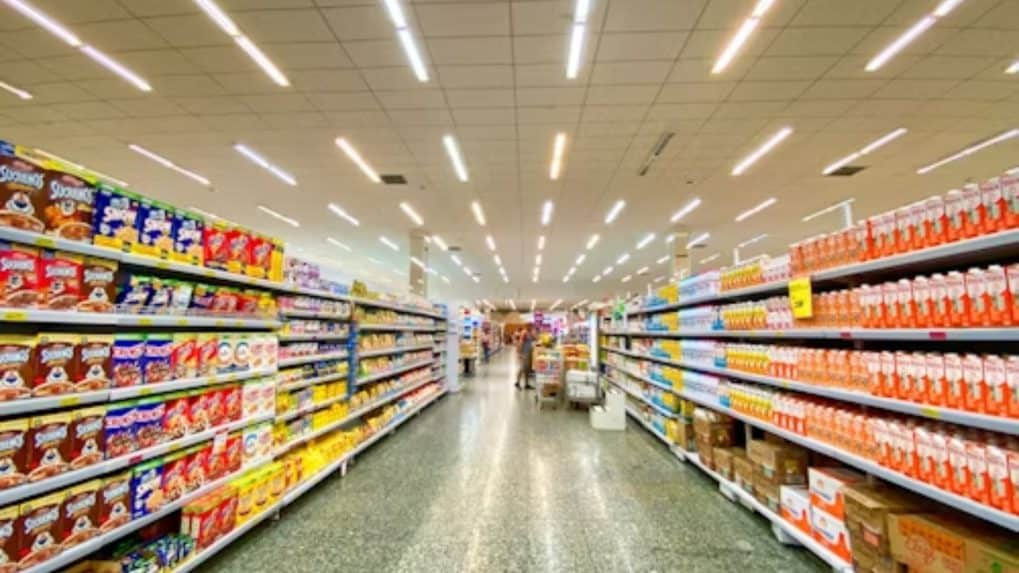Digital
Why OpenAI is hiring 100 ex-bankers: Inside the ChatGPT-maker's secret project to automate Wall Street's grunt work

The FMCG sector in India continued to face sluggish growth, with volume expansion clocking in at just 3.9% for the year ending July 2025, according to the latest Worldpanel FMCG Pulse Report Q3 2025.
As per the report, this marks a decline from 5.4% growth during the same period last year, extending a five-quarter trend of sub-5% volume growth. The report suggests that while the final quarter may see a slight recovery, it is unlikely that volume growth will surpass the 5% threshold this calendar year.
Categories such as cocoa, coffee and palm oil saw significant inflation due to global supply disruptions and weather-related issues, impacting large consumer segments such as biscuits, chocolates, soaps and coffee.
Data indicates a direct relationship between rising prices and weakening demand. For instance, macaroni recorded a 65% volume growth with minimal price hikes, whereas coffee saw a value-volume differential of 20% points and negligible growth at 0.2%. This trend underscores the potential for a revival in growth if prices stabilize or correct.
High-Spend Categories Face Consumption Resistance
As per the report, households continue to allocate significant portions of their budgets to essential categories. Cooking media such as edible oils, ghee, and vanaspati command the highest spend at Rs. 5,944 per household annually, up 6% from last year.
However, consumption has marginally declined as households try to manage rising costs. Snacking and fabric care, which see average annual spends of Rs. 2,408 and Rs. 2,050 respectively, also experienced flat consumption despite higher spending, signaling a cautious approach by consumers.
GST Effect
The report highlights the impact of GST and strategic pricing interventions. Some manufacturers are shifting away from conventional price points to unconventional packs, e.g., a Parle-G Rs. 5 biscuit now sells at Rs. 4.45 with no change in grammage.
While this has not yet significantly altered consumption, it reflects manufacturers’ efforts to maintain affordability amid inflationary pressures.
Urban Middle Class and Tier-2 Cities Lead FMCG Consumption
Contrary to assumptions that metro middle-class households dominate FMCG consumption, data shows tier-2 city households outpace metros in volume and spending.
Tier-2 middle-class shoppers purchased 231 kg of FMCG annually, 17% more than metro shoppers, and spent Rs. 31,000 on average compared to Rs. 30,000 in metros. While metro shoppers favor premium products at Rs. 153 per kg, tier-2 shoppers’ higher overall consumption underscores the growth potential in non-metro markets.
The premium FMCG segment constitutes 15% of the market, valued at Rs. 98,000 crores, with a “super-premium” subsegment contributing nearly 40% of premium volume. Health products, now worth Rs. 63,093 crores, have emerged as a key driver of premiumization, posting a 12% CAGR over four years.
Notably, even less affluent households are willing to pay a premium for health-oriented products, highlighting a broad-based shift in consumption behavior toward wellness and quality.
Branded Products Dominates
Indian households interact with over 100 FMCG brands annually, with branded products accounting for 74% of in-home FMCG volume. The sector’s resilience and sustained consumer interest reflect the strength of India’s FMCG ecosystem, which hosts some of the world’s largest and most trusted brands.
While volume growth has slowed, the FMCG sector is poised for recovery driven by price adjustments, continued premiumization, and the expanding consumer base in tier-2 cities.
In a wide-ranging interview with Storyboard18, Sorrell delivers his frankest assessment yet of how the deal will redefine creativity, media, and talent across markets.